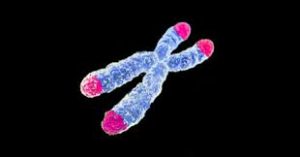Growing Life Spans And Life Expectancy

Lifespans Continue to Increase in both the United States and Britain
The last two hundred years have seen fantastic gains in life expectancy for residents of first-world countries across the globe. There are a number of different factors that have contributed to this swift increase in lifespan over the last two centuries.
In the late 1800s and early 1900s, a number of different changes in the way that first world citizens lived their lives contributed to extended lifespans:
Germ theory was established in the mid-1800s. As a result, medical professionals and average citizens became more aware of the importance of cleanliness and could avoid disease more effectively.
Sanitation also quickly advanced during this period. As a result of germ theory, medical professionals recognized the importance of using sterilized instruments to perform surgeries and other medical procedures.
Improved education in first-world countries helped circulate all of this information, in addition to helping people understand the importance of making efforts to safeguard themselves from various health dangers that could increase their mortality risk.
Improved living conditions among first-world nations reduced the risks associated with both exposure and living in densely packed, dirty conditions.
As a result of these advancements and others, children and middle-aged adults were considerably less likely to die of infections and other common dangers. After these advances reshaped first-world life, swift enhancements in medical science further reduced mortality risk among these two groups.
Vaccinations inoculated children from diseases like smallpox and polio, and the discovery and proliferation of antibiotics further reduced the risk of infection and prevented needless deaths from a variety of bacteria-related illnesses.
infection and prevented needless deaths from a variety of bacteria-related illnesses.
After these advancements took place, mortality risks for younger age groups more or less bottomed out, with most major mortality risks defeated. Increased lifespans since the mid-20th century have almost entirely been the result of medical advances that allow aging men and women to live longer and healthier lives into their seventies and beyond.
Advancements in the treatment of heart disease, a reduced incidence of smoking, and improved nutrition are just a few examples of how men and women are living longer over the past 70 years.
Increased Life Expectancies for Americans in the 21st Century
Over the last fifteen years in America, average life expectancy continues to grow among the majority of groups in America. Data on life expectancy was compiled by the National Center for Health Statistics.
A person born in 2009 in America can look forward to a lifespan that is 78.5 years old on average. Only a year earlier, the average lifespan was estimated to be 78.1 years.
American Life Expectancies by Demographic
Both men and women experienced gains in average life expectancy. Women still live longer lives than men, but men have bridged the gap very slightly. A boy born today would be expected to live 76 years, up from 75.6 years if they were born a year earlier. A girl born today would be expected to live 80.9 years, up from 80.6 one year earlier.
When the numbers were broken down further, all races examined also experienced an increase in average lifespan:
Non-Hispanic Whites are now expected to live 78.8 years, up from 78.5
Hispanics are expected to live 81.2 years, up from 81.0
Blacks are expected to live 74.5 years, up from 74.
This is fantastic news for everyone looking forward to a long and healthy life. Life expectancy in the United States continues to increase for all groups.
Issues with Demographic Disparity in lifespan
Doctor David Katz of Yale University is pleased that everyone is living longer but is concerned about the gender and racial disparities of the research. Katz, who was not a member of the team that produced the report, explained that the disparities between men and women and between blacks and whites need to be studied, and steps need to be taken to correct the disparity.
Living Americans Also Benefit from Longevity Advances
In addition to estimating life expectancies from birth, the Center for Disease Control also estimates the lifespans of Americans already living. They have found that Americans of all ages experienced at least a slight increase in lifespan between 2008 and 2009. This increase in lifespan was due to the improved treatment and/or reduced incidence of a variety of different mortality risks, including stroke, cancer, heart disease, respiratory illness, and accident.
improved treatment and/or reduced incidence of a variety of different mortality risks, including stroke, cancer, heart disease, respiratory illness, and accident.
Although the mortality risk of these factors declined, there were two primary areas where mortality risk increased: suicide and chronic liver disease. These negative influences on lifespan were relatively minor when compared to the positive influences of other factors.
lifespan Increases by Age in 2009:
An individual that was 65 years old should live an average of 19.1 more years.
An individual that was 85 years old should live an average of 6.6 more years.
An individual who is 100 years old should live an average of 2.3 years.
Although both living men and women experienced an increase in lifespan, they experienced net gains due to different factors.
Reasons for Lifespan Increase in Americans by Gender
Males lived longer as a result of decreased mortality from the following factors:
Homicide
Respiratory Disease
Heart Disease
Accidents
Cancer
Women lived longer as a result of decreased mortality from the following factors:
Stroke
Heart Disease
Respiratory Disease
Alzheimer's Disease
Cancer
British Life Expectancies Still Increasing
In Great Britain, lifespans are also on the rise. In Great Britain, the separation between the female and male lifespan continues to shrink over time, at a similar rate to the United States. In the year 2008, women lived five years longer than their male counterparts on average. The gap shrank to 4.9 years in 2009.
History of British Life Expectancy
Interestingly enough, the gap between the male and female lifespan didn't use to be so stark in Great Britain. In the year 1900, women only lived two years longer than men, but this difference on average grew significantly over time.
By 1975, women lived 7.8 years longer than men. There are multiple reasons for this. One reason is that fewer people were dying during childhood and middle age, where the risks were much more equal for both sexes. The biggest reason other than generally increased longevity was that men are more at risk for lung cancer and heart disease, so before medical treatments were modernized, men were much more likely to die early than women.
In the years between 1979 and 2007, the difference in lifespan dropped slowly and unsteadily over time until the difference reached five years. Since 1979, the two factors which brought male and female lifespans closer together were a slight increase in early deaths attributed to lung cancer among women and a rapid decrease in the mortality rate associated with male heart disease.
Lifespans Increasing Like Clockwork
lifespans in Great Britain are still increasing relatively fast, which can even be measured by the day. Each day, a child born will live an average of 5-6 hours longer than a child born the day before. It's quite an amazing statistic when you think of it in such reduced terms. Researchers also believe that life expectancies should continue to increase at a similar rate throughout the next ten years. After a decade, it is expected that men and women will both live two full years longer than they do today.
The human lifespan has been linearly increasing over the past 210 years in the United Kingdom. In the year 1800, the average lifespan was only forty years old! Now, the average lifespan is 81.9 years for women and 77.7 for males.
 Professor Kirkwood, a representative of Newcastle University and the director of the Institute for Ageing and Health, explain that lifespans in Great Britain have been getting longer, almost like clockwork for over the past 200 years. What makes this even more fascinating is that the average human lifespan has been increasing at a similar rate in pretty much all countries not experiencing a significant health crisis or violent insurrection.
Professor Kirkwood, a representative of Newcastle University and the director of the Institute for Ageing and Health, explain that lifespans in Great Britain have been getting longer, almost like clockwork for over the past 200 years. What makes this even more fascinating is that the average human lifespan has been increasing at a similar rate in pretty much all countries not experiencing a significant health crisis or violent insurrection.
In Great Britain and the rest of the Western World, the average lifespan of human beings remained stable for an exceptionally long period of time: between the era of the Roman Empire and the year 1800. Only after this period did lifespans start to increase at a linear rate. First in Western nations and the United States, then progressively throughout the world.
Sanitation, Civil Engineering, and Lifespan
The change that spurred the increase in lifespan was similar in Great Britain as it was in other first-world countries. In the early 1800s, general health was improved primarily through works of civil engineering. Housing opportunities improved significantly, an increased emphasis on clean water spread throughout the country, and better plumbing and sewage systems became more common. This increased lifespans by reducing the level of exposure that citizens had to viruses and bacteria.
Vaccines, Antibiotics Increase Lifespan
Toward the end of the 1800s, vaccines were invented and became increasingly common, further increasing lifespans. The final great change heralded the beginning of modern medicine after World War II, when antibiotics, most famously penicillin, were able to save the lives of millions suffering from infections that would have easily killed them only decades earlier.
Before the invention and proliferation of antibiotics, even a simple scratch could be deadly with little to no health recourse if things turned for the worse. Blood poisoning had a very high mortality rate, and there was no simple cure.
Lifespans went from stable for centuries to rapidly increasing with every new health innovation that was made public. All of these changes were able to decrease mortality risk primarily because they prevented people that would be otherwise healthy from getting sick. Before the 1800s, there were countless factors that led to early mortality during childhood and early adulthood, and by the mid-1900s, none of these issues was a factor any longer.
Helping the Elderly Live Longer, More Fulfilling Lives
To the surprise and delight of medical scientists and researchers that study aging, there has been no evidence that average lifespans are increasing at a slower rate. In the 1970s and 1980s, UN representatives were almost certain that lifespans would start to increase at a slower rate, particularly since the primary factors that increased lifespan before the 1950s were related to safeguarding health during the earlier portions of the lifespan.
Researchers believed that lifespans would continue to increase as health care continued to improve for geriatric patients; they did not expect that  lifespans would continue to increase at such a rate. All signs seemed to suggest that the average human lifespan would eventually hit a hard ceiling, but there are no signs to this point suggesting that that will be the case, at least over the next ten to twenty years.
lifespans would continue to increase at such a rate. All signs seemed to suggest that the average human lifespan would eventually hit a hard ceiling, but there are no signs to this point suggesting that that will be the case, at least over the next ten to twenty years.
The Future of Longevity is Difficult to Predict
Most researchers during this period felt that medical science was approaching its apex, but as they would inevitably discover, life expectancy would continue to climb as the medical community continued to figure out new ways to make people healthier and deeper into their lifespan.
There are a lot of reasons why lifespans continue to increase linearly. It appears that one of the primary reasons why we are getting healthier today is related to nutrition. As we learn more about vitamins, minerals, and how the human body utilizes them, the average person can make healthier choices that can help preserve their health deeper into their lifespan.
Could Humans Have a Maximum Lifespan?
There has been a large contingent of scientists in the recent past that have argued that human beings simply have a maximum lifespan. They hypothesized that humans had a maximum lifespan in order to prevent large numbers of elderly men and women from reducing the overall health and genetic viability of younger, fertile human beings.
As lifespans continue to increase and our ability to tackle common illnesses and medical conditions continues to become more effective, it appears that it is not evolution that inhibits the lifespan but the gamut of environmental factors which prevent human beings from living up to their potential.
Some Doctors Predict that Current Longevity Increases are Unsustainable
Although human lifespans still show no signs of slowing, most medical experts are still not convinced that human lifespans can continue to increase at such a steady rate. If lifespans continued to increase at the current rate, the average British citizen would live to 100 by 2100 and to 120 by 2200.
Dr. Kirkwood is among the researchers that are skeptical about steadily increased gains for the foreseeable future, explaining that, in his opinion, human lifespans will increase by another ten years before plateauing for the foreseeable future. He does recognize, however, that the medical community has been wrong in the past, and he admits that anything is possible.
Another expert on the process of aging, Doctor Lynne Cox of Oxford, shares Dr. Kirkwood's opinion. She is certain that lifespan increases will slow down over the coming decades. She feels that average lifespans will start to plateau due to diseases of choice, such as diabetes and obesity, which will start to have a negative impact on human health that starts to counteract consistent gains over time.
She feels that the big question regarding longevity in the next thirty years is whether men and women in their teens, twenties, and thirties today will choose to control their weight more effectively to improve their long-term health and longevity.
The Potential Impact of Future Medical Technologies on Lifespan
So in the 19th century, changes in sanitation increased lifespans at a steady rate. Germ theory and vaccination advances increased lifespans in the late 19th and early 20th centuries. In the mid-20th century, antibiotics were the primary factor that helped us live longer. Over the past 65 years, we have been living longer as a result of better geriatric care and an increased emphasis on good nutrition.
What will be the next factor which increases lifespans?
That's an excellent question that will inevitably be answered definitively over the course of the next twenty to fifty years. Will humans choose to eat and live smarter and healthier lives? That will likely play a significant role.
Neurological Health and Longevity
Some of the most significant scientific hurdles to the next stage of longevity are related to neurological health. We are getting better at preserving the heart, the lungs, and the cardiovascular system, but neurological disorders such as Alzheimer's and Dementia are preventing countless men and women from reaching the century mark. The good thing is that medical advances in these neurological disorders seem to suggest that we will inevitably cure these diseases, relieving another negative pressure on geriatric health and longevity.
Hormone Balance and Longevity
Another factor that will inevitably increase human lifespan is an increased emphasis on positive health and hormone balance. Decades of research suggest that hormone deficiencies such as Human Growth Hormone Deficiency and Testosterone Deficiency increase the speed at which aging occurs, preventing people from maximizing their lifespan. Testosterone and HGH are both incredibly important hormones that encourage strong metabolism and healthy cellular function.
There is evidence that Hormone Replacement Therapy may play a role in alleviating issues such as obesity, heart disease, and even neurological disorders such as Alzheimer's, Parkinson's, and general cognitive decline that significantly hinder 21st-century longevity.
Telomeres and Longevity
Another future barrier to longevity appears to be the phenomenon of telomere-shortening. Telomeres are like the aglets which hold shoelaces together. Telomeres are Junk DNA attached to the ends of our chromosomes, holding our important genetic code in place. As the telomeres shorten, the risk of  genetic mutation increases over time.
genetic mutation increases over time.
Each time that a cell undergoes replication, the telomeres shorten ever so slightly.
There is groundbreaking research regarding telomeres being performed today, in which scientists may have engineered a way to support and sustain telomeres, reducing the incidence of genetic mutation and therefore reducing the incidence of age-related genetic mutations which lead to cancer and life-threatening disorders.
Genetic Engineering and Longevity
Telomere Lengthening is just one form of Genetic Engineering and Modification which can potentially increase lifespans in the near future. As we learn more about how to influence the human genetic code, we may eventually be able to turn off genetic mutations that lead to increased breast cancer risk or other medical risks. The faster we learn about how genetic predisposition affects health and longevity, the sooner that we will be able to create genetic engineering strategies to combat these negative influences on health and longevity.
The Future of Longevity Might be in the Hands of the Patient
Medical researchers have every right to be skeptical regarding the potential for lifespans to increase indefinitely over time, but in the past, whenever they have hypothesized that humans will slowly start to plateau in life expectancy, they have been pleasantly proven wrong.
The future of health, wellness, and longevity appear to largely be in the hands of the patient in the near future. Although scientists can come up with cures for various diseases and disorders, lifestyle-related conditions such as obesity, diabetes, and lung cancer will be the factors that have the most significant medical impact on lifespan.
There is significant potential that lifestyle choices will be the predominant factors contributing to the average lifespan over the next one hundred years. Those who choose to live healthy will continue to have the opportunity to live longer and healthier lives, and those that succumb to vice will pay for it both by getting sicker more often and aging more quickly.
Those who choose to live healthy will continue to have the opportunity to live longer and healthier lives, and those that succumb to vice will pay for it both by getting sicker more often and aging more quickly.
Men and women that choose to live conscientiously will be afforded the opportunity to live to achieve their ultimate potential, while those that languish in the small pleasures of cigarettes, drugs, sloth, and fatty foods will fall further and further behind, depressing the average lifespan overall but ultimately not impacting the health of those that choose to live a responsible lifestyle.
Do You Want to Live Longer?
What do you see in your own future? Are you content to live a life of vice and short-term pleasure, or do you want to live a long and happy life where you have risen above the small and petty pleasures that vice offers you?
- What Is Andropause And How Can I Prepare For It? [Last Updated On: November 11th, 2024] [Originally Added On: February 20th, 2021]
- Theories On Aging [Last Updated On: November 10th, 2024] [Originally Added On: February 21st, 2021]
- Sleep And Hgh Go Hand In Hand [Last Updated On: November 9th, 2024] [Originally Added On: February 22nd, 2021]
- L-carnitine Has The Ability To Preserve Mental Sharpness In The Elderly [Last Updated On: November 8th, 2024] [Originally Added On: February 23rd, 2021]
- Knowing Two Languages Can Postpone Dementia [Last Updated On: November 7th, 2024] [Originally Added On: February 24th, 2021]
- What Are The Functions Of Human Growth Hormone? [Last Updated On: November 5th, 2024] [Originally Added On: February 25th, 2021]
- Hgh Sleep: Keep Young And Healthy With Deep Sleep [Last Updated On: November 4th, 2024] [Originally Added On: February 26th, 2021]
- Why Does Human Growth Hormone Production Drop As We Age? [Last Updated On: November 3rd, 2024] [Originally Added On: February 27th, 2021]
- Flax Seed Oil: Longevity And Anti-aging Medicine [Last Updated On: November 1st, 2024] [Originally Added On: March 1st, 2021]
- Exercise To Increase Your Hgh Production! [Last Updated On: February 19th, 2025] [Originally Added On: March 2nd, 2021]
- Eighteen Suggestions For A Longer And Happier Life [Last Updated On: October 31st, 2024] [Originally Added On: March 3rd, 2021]
- Chemical Pollution Is Destroying Masculinity [Last Updated On: February 19th, 2025] [Originally Added On: March 4th, 2021]
- Bio-identical Hgh Hormone Replacement Therapy [Last Updated On: October 30th, 2024] [Originally Added On: March 5th, 2021]
- The Longevity Film: A review [Last Updated On: July 8th, 2024] [Originally Added On: October 25th, 2022]
- Blue Zone Cultures and Their Connection to Longevity [Last Updated On: February 20th, 2025] [Originally Added On: October 27th, 2022]
- The Prevalence and Impact of Endocrine Disrupting Chemicals [Last Updated On: February 11th, 2025] [Originally Added On: February 11th, 2025]
- Understanding Exercise's Role in Slowing Down Aging [Last Updated On: February 10th, 2025] [Originally Added On: February 12th, 2025]
- Understanding the Concept of Blue Zones [Last Updated On: February 16th, 2025] [Originally Added On: February 16th, 2025]
Word Count: 2993







